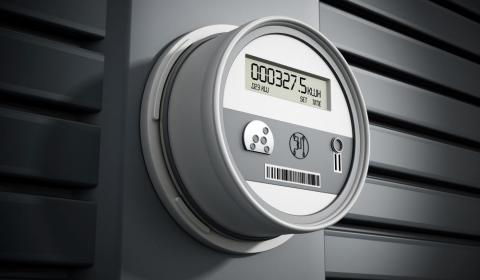
Optimizing energy management through systematic measuring and monitoring
Before the COVID-19 crisis, the words on everyone’s lips were climate change. The spotlight was firmly on the work of activists like Greta Thunberg; environmental footprint-reducing initiatives by governments, organizations and individuals; and major international efforts such as the UN’s Paris agreement. For the last few months, those subjects have taken a back seat to a worldwide emergency. But as we emerge from lockdown, governments, businesses and society as a whole are more intent than ever on reinventing a world that is safer, healthier and more sustainable.
Energy in = emissions out
The production and consumption of energy is at the heart of the matter since it is one of the biggest culprits behind climate change. Production of electricity – which accounts for just under a fifth of total energy[1] - generates the second largest share of the world’s total greenhouse gas emissions. Not only that, but around 63% of our electricity comes from fossil fuels, mostly coal and natural gas. Fuels represent 82% of the energy mix and account for the largest share of direct emissions, principally via transportation and industrial uses.
Since all businesses use energy throughout their processes, energy management is one of the key ways they can reduce emissions and, as a result, environmental impact. Companies consume energy in the form of electricity simply by ventilating, lighting, cooling and sometimes heating their premises, before they even start work! Data storage, meanwhile, consumes a vast amount of electricity, and production processes and the transportation of goods result in direct emissions from consumption of fuel. Through an in-depth understanding of how they use energy, organizations can identify waste and seize opportunities to reduce emissions.
Small changes make a huge difference
Let’s look at an example from the manufacturing industry. Keeping equipment in good working condition and making timely replacements are surefire ways to ensure greater energy efficiency - and not just for major pieces of equipment. Keeping ceiling fans, motors and computers regularly updated can really make a difference to energy consumption over time. Similarly, process heating is required to make most consumer and industrial goods and can account for more than a third of a facility’s energy usage.[2] There are a number of methods for saving energy in this area, including installing waste heat recovery systems and automatic blowdown control systems.
In service businesses, energy consumption is often linked to heating or cooling premises, running computers, and storing data. A quick win for office-based companies is simply to shut down equipment at the end of the day, which seems obvious but is often overlooked. In a world where virtually all technology runs on electricity, shutting down computers and other equipment overnight or while on vacation can lead to significant energy savings.
Keeping an eye on energy consumption may be a challenge, but it is worthwhile as small inefficiencies, perpetuated 365 days a year, can result in major energy waste. A lighting timer linked to a presence sensor in car parks, for example: if set wrongly, it could lead to a business using far more energy than necessary for zero benefit to employees. On the flipside, investments in technology such as smart meters, which record and report on energy consumption in near-real time and which have seen major advances in recent years, can lead to significant energy and cost savings.
Start with awareness
The first step for companies looking to reduce their energy usage is to become aware of the parts of their business that consume the most - their areas of Significant Energy Use (SEUs). Identifying such crunch points is crucial to developing an effective Energy Management System (EnMS), an increasingly common tool to reduce environmental impacts from energy.
It all starts with an Energy Review, which analyses energy consumption based on measurements and hard data. This information is used to determine current energy performance and identify opportunities for improvement. Such a comprehensive review enables an organization’s management to create an energy policy that establishes the systems and processes necessary to improve energy performance.
find out more about energy management system
Knowledge drives change
Understanding every part of your business is vital to optimizing management and effectiveness, and data is key to acquiring that kind of in-depth comprehension. Management expert Peter Drucker is often quoted as saying, “If you can’t measure it, you can’t improve it,” and nowhere is this truer than in an organization’s energy consumption.
Accurate measurement and collection of energy use data based on appropriate performance indicators and a relevant energy baseline offer organizations the tools to make widespread and sustainable improvements. Energy data must be correctly identified, measured, monitored and analyzed at planned intervals, and a company’s energy data collection plan needs to be appropriate to its size, complexity and resources, as well as its measurement and monitoring equipment.
A comprehensive approach to energy efficiency
Implementing an Energy Management System helps you monitor, manage, predict and reduce energy use. In today’s competitive marketplace, that is no longer just “nice to have”. By implementing a system that is compliant with the ISO 50001 Energy Management System standard, you can establish an energy policy with concrete objectives and processes to achieve them. Going further, certification ensures you will continue to improve your energy use with the associated cost reductions, all the while sending a clear message to stakeholders about your commitment to achieving sustainability objectives.

